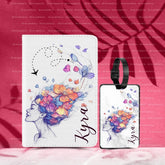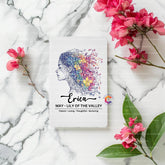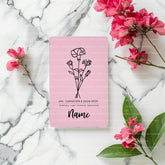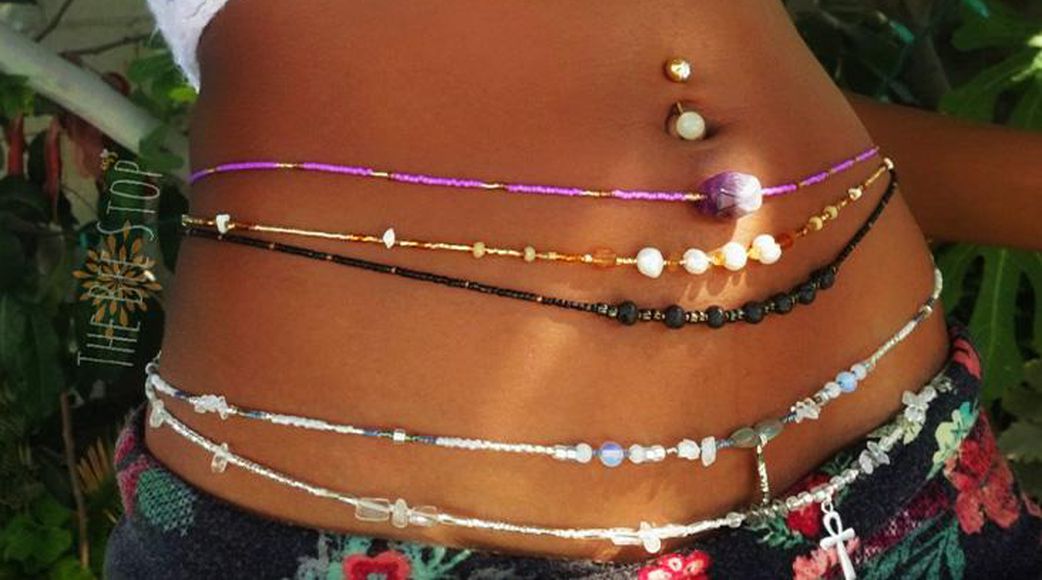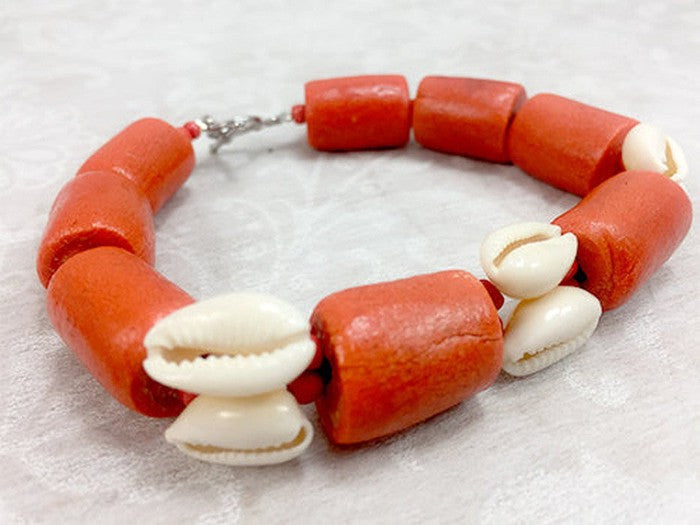What are African waist beads?
What are African waist beads?
African waist beads are traditional body jewelry worn around the waist and hips by women across West African cultures, serving as symbols of femininity, sensuality, body awareness, and spiritual protection for centuries. These colorful strands of beads, made from glass, coral, or seeds, function as intimate accessories that celebrate womanhood while providing practical benefits like body monitoring and spiritual grounding. Beyond their beauty, waist beads carry deep cultural significance related to coming-of-age rituals, fertility blessings, and the celebration of feminine confidence.
Picture a young African woman on her wedding morning, her aunties carefully draping coral waist beads around her hips while whispering secrets about womanhood that no wellness influencer could ever teach you. The energy in that room? Pure feminine magic.
See, African waist beads are the original body positivity movement. While modern society was busy telling women to hate their bodies, African culture was creating jewelry that celebrated every curve, every change, every beautiful moment of being in a woman's body.
These aren't just pretty accessories you can grab anywhere - though yes, you can now buy them in the marketplace. They're intimate celebrations of womanhood that have been helping women track their health, embrace their sensuality, and connect with their spiritual power long before any of this became trendy.

The cultural origins of African waist beads
Let's start from the beginning - African waist beads didn't just appear out of nowhere. They have roots that go deeper than your family tree and a history that's more fascinating than any Netflix series.
Traditional African waist beads date back to ancient Egypt, where they were called "girdles" and showed up in hieroglyphics like the original Instagram posts. As trade routes connected Africa, these waist-worn treasures spread across West Africa and became deeply embedded in Nigerian culture through the Yoruba, Igbo, Edo, and Hausa peoples.
Originally, waist beads were made from natural materials that would make your sustainable lifestyle blogger proud - clay, ivory, bones, cowrie shells, animal teeth, and precious stones. After the 12th century, glass beads entered the scene and became the material of choice that's still popular today.
Here's what's fascinating: each Nigerian ethnic group developed their own waist bead traditions and names. The Yoruba call them "Ileke" or "Ibebe-Idi," the Igbo refer to them as "Mgbaji," and the Hausa know them as "Jigida." It's like having different dialects for the same beautiful language of feminine expression.
But here's the historical reality check - traditionally, these weren't marketplace purchases. Waist beads were carefully crafted by skilled artisans and often passed down through generations or specially made for significant life events. Today, you can find beautiful waist beads inspired by these traditions in collections like OhSoColorful's African coral pieces, which honor the authentic materials and cultural significance.
What purposes do waist beads serve traditionally?
Now this is where waist beads get really interesting - they're basically the original multitasking accessory that modern wellness culture wishes it invented.
Traditionally, waist beads marked major feminine milestones. When a young girl got her first period, her mother would tie waist beads around her hips as a symbol of entering womanhood. It was like getting your driver's license, except instead of driving cars, you were officially driving your own feminine power.
The body monitoring aspect was pure genius. These non-stretchy beads served as the original fitness tracker, except they looked stunning and never needed charging. Gain weight? The beads sit higher and feel tighter. Lose weight? They slip down and feel looser. It was real-time body awareness that helped women stay connected to their physical changes.
But here's what really gets me - waist beads were used for health tracking that goes way beyond weight. Pregnant women wore them to monitor their growing bellies. New mothers used them to track their postpartum recovery. Some cultures even wove specific herbs into the beads for birth control or fertility enhancement.
The spiritual protection element was equally important. Waist beads were believed to protect the reproductive area from negative energy and ill intentions. Think of them as the original energetic boundary-setting tool for women's most sacred space.
Modern interpretations maintain these traditional purposes while adapting to contemporary life. When you choose pieces like the Traditional African Coral Bead Bracelet, you're connecting with this tradition of using beautiful beads for both practical and spiritual purposes.

How do African waist beads enhance sensuality and intimacy?
Okay, let's talk about the part that makes some people blush - how waist beads became the original intimate accessory that puts modern lingerie to shame.
Traditionally, waist beads were considered deeply intimate and were only meant to be seen by a woman's husband or chosen partner. They were worn under clothing, creating a secret between a woman and her most trusted person. It's like having a beautiful secret that only you and your person know about.
The sensuality aspect wasn't just about appearance - it was about sound, movement, and touch. When a woman walked, her waist beads would create a subtle musical rhythm that was both mesmerizing and alluring. The gentle clicking and shifting of beads against skin created an intimate soundtrack that traditional Nigerian culture recognized as powerfully feminine.
In some cultures, particularly among the Yoruba and Asante tribes, waist beads were specifically used to enhance intimate connections between married couples. The beads were believed to stir deep desire and maintain passionate connections in marriage. They turned the waist area - already considered an erotic zone - into an even more enchanting focal point.
Here's what's beautiful about this tradition: it celebrated female sensuality as natural and powerful, not something to be ashamed of. While many cultures were teaching women to hide their sexuality, Nigerian traditions were creating jewelry that celebrated it.
Modern couples are rediscovering this intimate aspect of waist beads. They're finding that these traditional accessories can enhance body confidence and intimate connection in ways that feel both authentic and empowering.

What spiritual significance do waist beads hold?
The spiritual side of waist beads is where things get really powerful - we're talking about sacred protection for women's most sacred space.
In traditional African spiritual beliefs, the waist and hip area is considered the center of feminine creative and reproductive power. Waist beads weren't just decoration for this area - they were spiritual armor designed to protect this energy center from negative influences.
The protection extends beyond the physical to the energetic realm. Waist beads were believed to create a spiritual barrier against jealousy, evil eye, and negative intentions directed toward a woman's fertility and feminine power. Think of them as the original energetic boundaries for women's reproductive health.
Different materials carried different spiritual properties. Coral beads, for example, were prized for their protective and life-giving energy. Certain stones were added to enhance fertility, while others were included to prevent unwanted pregnancy or protect during childbirth.
The chakra connection is particularly fascinating. Traditional African spiritual practices recognized that the waist area corresponds to the sacral chakra - the energy center governing creativity, sexuality, and reproductive health. Waist beads were used to balance and protect this vital energy center.
When you choose spiritually significant pieces like the African Traditional Coral Beads Bridal Jewelry Set, you're connecting with this tradition of using beautiful beads for spiritual protection and energy work.
Modern practitioners are rediscovering these spiritual applications, using waist beads for meditation, energy healing, and spiritual grounding in ways that honor traditional wisdom while serving contemporary spiritual needs.

African Traditional Coral Beads Bridal Jewelry Set
How are waist beads used for body monitoring and wellness?
This is where African culture was basically doing what fitness trackers do now, except they made it look stunning and never needed a software update.
Traditional waist beads were the original body awareness tool. Since they don't stretch, they provided real-time feedback about body changes that was way more intuitive than stepping on a scale. When your beads start sitting higher or feeling tighter, you know immediately that your body is changing - no judgment, just awareness.
But here's what makes this brilliant: unlike the numbers on a scale that can trigger negative self-talk, waist beads promoted body neutrality. They didn't say "you've gained 5 pounds and should feel bad." They just said "your body is changing, and that's information." It's the original body-positive wellness tool.
Pregnancy tracking was another genius application. Women would wear waist beads to monitor their growing bellies throughout pregnancy. As the baby grew, the beads would naturally adjust position, providing a beautiful way to track this incredible body transformation without the clinical feeling of medical measurements.
Postpartum recovery got the waist bead treatment too. New mothers used them to track how their bodies were healing and returning to their pre-pregnancy state. It was gentle, continuous body awareness that supported the natural recovery process.
Modern wellness enthusiasts are rediscovering these applications. Women use waist beads to stay connected to their bodies during weight loss journeys, health transformations, and general wellness practices. It connects perfectly with mindful approaches to body awareness, like the intention-setting practices we explore in manifesting goals.

What do different colors of waist beads mean?
Color symbolism in Africann waist beads is like having a visual vocabulary for your intentions - every hue tells a story and carries specific energy.
Traditional color meanings varied by region, but some patterns were consistent across African cultures. Red coral beads represented life force, fertility, and passion - basically the color of feminine power in its most vibrant form. White symbolized purity, spiritual cleansing, and new beginnings. Blue represented peace, loyalty, and spiritual protection.
Green waist beads were associated with abundance, growth, and healing - perfect for women focusing on personal development or recovery. Yellow and gold represented prosperity, confidence, and divine connection. Black beads were used for protection against negative energy and spiritual grounding.
But here's what's interesting about the marketplace reality: while you can now buy waist beads in any color combination you want, understanding traditional color meanings adds depth to your choices. When you select colors intentionally, you're connecting with centuries of cultural wisdom about color psychology and energy work.
Modern practitioners often combine traditional color meanings with contemporary color therapy and chakra work. The African coral bead options available today allow you to choose colors that align with both traditional significance and your personal intentions.
Some women create color combinations that tell their personal story - mixing traditional meanings with modern goals. Others stick to single colors that represent their current life focus. The beauty is in the intentionality behind the choice.
How to wear and care for waist beads in modern times?
Let's get practical about bringing this beautiful tradition into your contemporary life without losing the cultural respect it deserves.
Traditional waist beads were tied on and worn permanently until they broke or were ceremonially removed. Modern options give you more flexibility - you can choose between traditional non-elastic strings that you tie and cut to size, or elastic versions that you can put on and take off as needed.
Sizing is crucial for comfort and effectiveness. Measure where you want to wear them - this could be at your natural waist, just above your hip bones, or lower on your hips. The key is choosing a placement that feels comfortable and serves your purpose, whether that's body monitoring, spiritual practice, or aesthetic enhancement.
For care and maintenance, treat your waist beads like the sacred accessories they are. Keep them dry when possible, avoid harsh chemicals, and handle them gently. Traditional materials like coral and natural stones require extra care, while glass and metal beads are more durable for everyday wear.
Cultural sensitivity is important here. While waist beads are now available in the marketplace, wearing them with respect means understanding their cultural significance. Learn about their history, appreciate their spiritual meaning, and avoid treating them as merely fashion accessories.
Modern styling can honor tradition while fitting your lifestyle. Some women wear them under clothing in the traditional way, others incorporate them into their visible style choices. The important thing is that your approach feels authentic to both the tradition and your personal expression.
When choosing quality pieces, look for authentic materials and craftsmanship that honors the tradition. Pieces from collections that understand the cultural significance will serve you better both practically and spiritually.
Frequently Asked Questions About African Waist Beads
Q: Are waist beads only for certain body types? A: Absolutely not. Traditional African culture celebrated women of all body types wearing waist beads. They're designed to enhance and celebrate your natural shape, whatever that may be.
Q: Can non-African women wear waist beads respectfully? A: Yes, when worn with cultural understanding and respect. Learn about their significance, appreciate their history, and avoid treating them as mere fashion accessories.
Q: How long do waist beads typically last? A: Traditional non-elastic waist beads can last for months or even years with proper care. Elastic versions may need replacement more frequently depending on usage and care.
Q: What's the difference between traditional and modern waist beads? A: Traditional waist beads were often inherited, made with specific cultural materials, and tied on permanently. Modern versions offer more material options, sizing flexibility, and can be removed and reworn.
Q: How do I choose the right size for waist beads? A: Measure around your body where you plan to wear them. Traditional placement varies, but common spots are at the natural waist, just above hip bones, or lower on the hips.

African waist beads represent one of the most intimate and empowering traditions in African culture - a beautiful celebration of femininity that's been helping women connect with their bodies, their sensuality, and their spiritual power for centuries.
From their ancient origins to modern applications, waist beads continue to offer women a way to honor their bodies, track their wellness, and celebrate their feminine energy in the most beautiful way possible. Whether you're drawn to their body awareness benefits, their spiritual significance, or their sensual appeal, waist beads offer a connection to feminine wisdom that transcends time.
While these sacred accessories are now available in the marketplace, understanding their traditional significance transforms them from simple jewelry into powerful tools for feminine empowerment and cultural connection. And honestly? In a world that often disconnects women from their bodies, that's exactly the kind of ancient wisdom we need.



